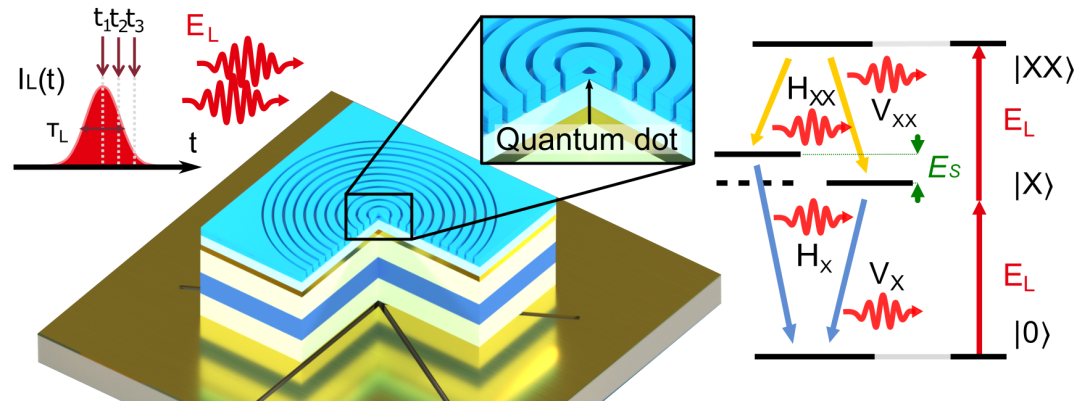Date:

Long from being solely an argument for physical paradoxes, entangled photons are now investigated as a basic resource for quantum technologies, such as secure communication and information processing. Many current research efforts focus on how these quantum signals can be generated on demand, with high fidelity and fast transmission rates. Quantum dots are a leading candidate to deliver these goals, but still require considerable engineering and—crucially—advances in our fundamental understanding of these physical systems. In a study recently published in Physical Review Letters, the Nanophotonics team led by Prof. Rinaldo Trotta at Sapienza University of Rome made an important step in this direction. The researchers focused on a state-of-the-art approach for on-demand generation of entangled photon pairs, a process known as two-photon resonant excitation.
In particular, they were able to experimentally identify for the first time a potentially detrimental physical mechanism, related to a laser-induced Stark shift, which can negatively affect the degree of entanglement as faster operation rates of the photon source are accessed. To be able to observe this phenomenon, the team at Sapienza developed a high-brightness quantum dot-based device able to generate entangled photons in the GHz regime, surpassing the rates of the previous device generation by almost an order of magnitude.
The result was achieved thanks to a joint effort with the Institute of Semiconductor and Solid State Physics of the Johannes Kepler University in Linz (Austria), the Physics Department of the University of Würzburg (Germany), and the Forschungszentrum Mikrotechnik of FH Vorarlberg (Austria). Using a quantitative model confirmed by comparison with the experimental data, the researchers showed how to design the laser pulses to strongly mitigate the negative impact of the newly observed effect in a cutting-edge prototype and suggested future strategies to explore as even faster devices become available. This work shows that it is too early to set the limits of this technology's role in the realisation of future quantum networks.
The full article by F. Basso Basset, M. B. Rota, M. Beccaceci, T. M. Krieger, Q. Buchinger, J. Neuwirth, H. Huet, S. Stroj, S. F. Covre da Silva, G. Ronco, C. Schimpf, S. Höfling, T. Huber-Loyola, A. Rastelli, and R. Trotta, Signatures of the Optical Stark Effect on Entangled Photon Pairs from Resonantly Pumped Quantum Dots, Phys. Rev. Lett. 121, 033902 (2023), is available here.


